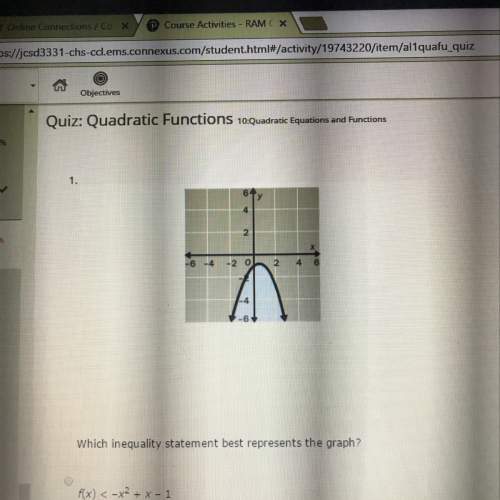
Mathematics, 03.02.2020 16:43 booo1144
Consider the following two events that involve rolling a pair of dice. complete parts a) and b) below. aequals rolling a total of three bequals rolling a total of two a) are these two events mutually exclusive? why or why not? a. the events are not mutually exclusive. the event of rolling a total of three can occur at the same time as rolling a total of two during the experiment. b. the events are mutually exclusive. the event of rolling a total of three can occur at the same time as rolling a total of two during the experiment. c. the events are mutually exclusive. the event of rolling a total of three cannot occur at the same time as rolling a total of two during the experiment. d. the events are not mutually exclusive. the event of rolling a total of three cannot occur at the same time as rolling a total of two during the experiment. b) are these two events independent? why or why not? a. the events are dependent. if a total of three is rolled then the probability of both dice being a total of two equal zero. b. the events are independent. if a total of three is rolled then the probability of both dice being a total of two does not change. c. the events are dependent. if a total of three is rolled then the probability of both dice being a total of two does not change. d. the events are independent. if a total of three is rolled then the probability of both dice being

Answers: 2
Another question on Mathematics

Mathematics, 21.06.2019 19:00
The following division is being performed using multiplication by the reciprocal find the missing numbers is 5/12 divided by x/3 equals 5/12 times x/10 equals 1/x
Answers: 2

Mathematics, 21.06.2019 19:30
Me max recorded the heights of 500 male humans. he found that the heights were normally distributed around a mean of 177 centimeters. which statements about max’s data must be true? a) the median of max’s data is 250 b) more than half of the data points max recorded were 177 centimeters. c) a data point chosen at random is as likely to be above the mean as it is to be below the mean. d) every height within three standard deviations of the mean is equally likely to be chosen if a data point is selected at random.
Answers: 2

Mathematics, 21.06.2019 20:30
Solve each quadratic equation by factoring and using the zero product property. [tex]x^2+6x+8=0[/tex]
Answers: 2

Mathematics, 22.06.2019 02:00
The trapezoid is composed of a rectangle and two triangles. what is the area of the rectangle? what is the total area of the triangles? what is the area of the trapezoid? a) 48 cm2; 32 cm2; 80 cm 2 b) 48 cm2; 16 cm2; 64 cm 2 c) 128 cm2; 32 cm2; 160 cm 2 d) 128 cm2; 16 cm2; 144 cm 2
Answers: 1
You know the right answer?
Consider the following two events that involve rolling a pair of dice. complete parts a) and b) belo...
Questions

Geography, 07.09.2019 03:10


History, 07.09.2019 03:10

Mathematics, 07.09.2019 03:10



Physics, 07.09.2019 03:10

History, 07.09.2019 03:10











Mathematics, 07.09.2019 03:10

Mathematics, 07.09.2019 03:10





